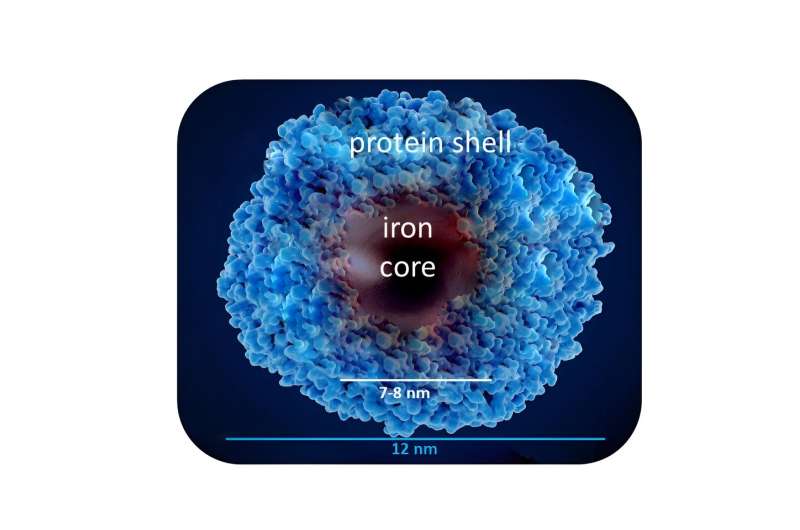This article has been reviewed according to Science X's editorial process and policies. Editors have highlighted the following attributes while ensuring the content's credibility:
fact-checked
peer-reviewed publication
trusted source
proofread
Alzheimer's researchers use physics techniques to investigate iron storage in the brain

Exactly how Alzheimer's disease develops is not well understood, but an imbalance of iron in the brain might just play a role. Martina Huber of the Leiden Institute of Physics studied iron storage in the brain and managed to combine two techniques to gain more insight. "To achieve this, we had to bring together expertise from different fields and I am proud that we succeeded," Huber says.
This research
was published in the journal Physical Chemistry Chemical Physics under the title "In-depth magnetometry and EPR analysis of the spin structure of human-liver ferritin: from DC to 9 GHz." "Alzheimer's is a complex condition and we are only studying a small part," Huber says. Yet it forms the main motivation for her research. "We know that in individuals with Alzheimer's, there is too much
How does a physicist investigate Alzheimer's?
The scientist combines two techniques mainly used in physics. "With a so-called SQUID-detector, we measure the magnetization. That indicates the extent to which a material responds to a magnetic field. We complement that with electron paramagnetic resonance (EPR) measurements. Both are normally used for fundamental materials research, but we deploy them for biological samples like the brain."
EPR exploits a very special quantum property of subatomic particles: spin. You can imagine this as a particle spinning by itself. When it has a charge, it creates a very small magnetic field and interacts with other particles in the environment. Researchers can measure that with EPR, Huber explains. "We do the most sensitive EPR measurements in the whole of the Netherlands. We can even study our samples down to the crystal structure and that gives a lot of information about a system."

Iron storage in the brain
Iron in the human body is stored in the protein ferritin. That is a spherical nanoparticle made of two types of proteins that interlock like the black and white surfaces on a football. They form a protein shell with a completely enclosed cavity inside. Iron ions can enter through the shell and lose an electron in the process. At 2,000 ions, the cavity is full and the iron forms an oxide that has a magnetic moment. This can be studied with EPR. "Sometimes we work with brain material, but in this case, we wanted to understand ferritin in its pure form first. That's tricky enough."
Huber brought together two fields of expertise in her research and that was certainly a challenge she says. "To interpret the data properly, we asked for help from a researcher studying nanomaterials in paleogeology. The history of the globe, in other words. We clearly have completely different backgrounds, but we managed to formulate a common theory. It was very interesting to learn more about each other's fields. I picked it up better than I expected to be honest."
One step closer
"There are all kinds of theories about Alzheimer's, but the road is long and the answer far away. A lot of research is still needed," Huber mentions. "We have shown that by combining magnetometry and EPR, we can find out more about the iron composition in the brain. That's an important step."
She says, "Perhaps our research will lead to a groundbreaking discovery for the treatment of Alzheimer's, although it could just as easily be a dead end. In any case, the physics behind it is interesting and therefore the research is still a lot of fun."
More information: Lucia Bossoni et al, In-depth magnetometry and EPR analysis of the spin structure of human-liver ferritin: from DC to 9 GHz, Physical Chemistry Chemical Physics (2023). DOI: 10.1039/D3CP01358H



















